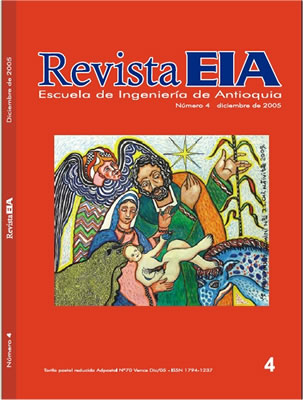PRODUCCIÓN Y CARACTERIZACIÓN DE PARTÍCULAS Y FIBRAS CORTAS DE β-SiC OBTENIDAS A PARTIR DE CÁSCARA DE ARROZ
PRODUCCIÓN Y CARACTERIZACIÓN DE PARTÍCULAS Y FIBRAS CORTAS DE β-SiC OBTENIDAS A PARTIR DE CÁSCARA DE ARROZ


This work is licensed under a Creative Commons Attribution-NonCommercial-NoDerivatives 4.0 International License.
Copyright statement
The authors exclusively assign to the Universidad EIA, with the power to assign to third parties, all the exploitation rights that derive from the works that are accepted for publication in the Revista EIA, as well as in any product derived from it and, in in particular, those of reproduction, distribution, public communication (including interactive making available) and transformation (including adaptation, modification and, where appropriate, translation), for all types of exploitation (by way of example and not limitation : in paper, electronic, online, computer or audiovisual format, as well as in any other format, even for promotional or advertising purposes and / or for the production of derivative products), for a worldwide territorial scope and for the entire duration of the rights provided for in the current published text of the Intellectual Property Law. This assignment will be made by the authors without the right to any type of remuneration or compensation.
Consequently, the author may not publish or disseminate the works that are selected for publication in the Revista EIA, neither totally nor partially, nor authorize their publication to third parties, without the prior express authorization, requested and granted in writing, from the Univeridad EIA.
Show authors biography
El aprovechamiento de la cáscara de arroz (CA) es mínimo en la mayoría de los países latinoamericanos y solo una pequeña porción se utiliza eficientemente como abono o combustible. Los productos obtenidos por pirólisis de CA son, sin embargo, útiles para la fabricación de productos abrasivos y refractarios a base de carburo de silicio (SiC). Hay aplicaciones de reciente desarrollo y de mayor exigencia que consisten en usar el SiC como refuerzo de aleaciones metálicas para la fabricación de composites metálicos.En esta investigación se han obtenido fibrillas cortas y partículas finas de SiC por pirólisis controlada de CA. La síntesis del SiC se llevó a cabo en un horno de gas diseñado y puesto a punto durante el desarrollo del proyecto. El proceso fue optimizado mediante un diseño experimental que incluyó como variables la temperatura, el tiempo de pirólisis, el tipo de catalizador y la atmósfera de proceso.
Abstract: The use of the rice hull is minimal in most of the Latin American countries and only a small portion is used as fertilizer or fuel. However, products of rice hull obtained by pyrolysis can be useful for abrasive and refractory products based on silicon carbide (SiC). Recently some applications have been developed to use SiC as reinforcement for metallic alloys for metal matrix composites.This paper reports the synthesis of short fibers and small particles of SiC obtained by controlled combustion of rice hull. The SiC synthesis was performed in a gas furnace, designed during the research. This process was optimized by an experimental design which included as variables the temperature, pyrolysis time, the type of catalyst, and process atmosphere.
Article visits 249 | PDF visits 142
